Your garage, often a neglected space, holds more potential than just parking cars and storing clutter. Upgrading your garage floor is a game-changer. It not only shields your concrete from stains, cracks, and damage but also elevates the entire look and feel of your garage. Choosing the right garage flooring can transform it into a more functional, attractive, and even enjoyable area. Let’s explore some of the best Garage Flooring Options to revamp your space.
1. Interlocking Garage Floor Tiles
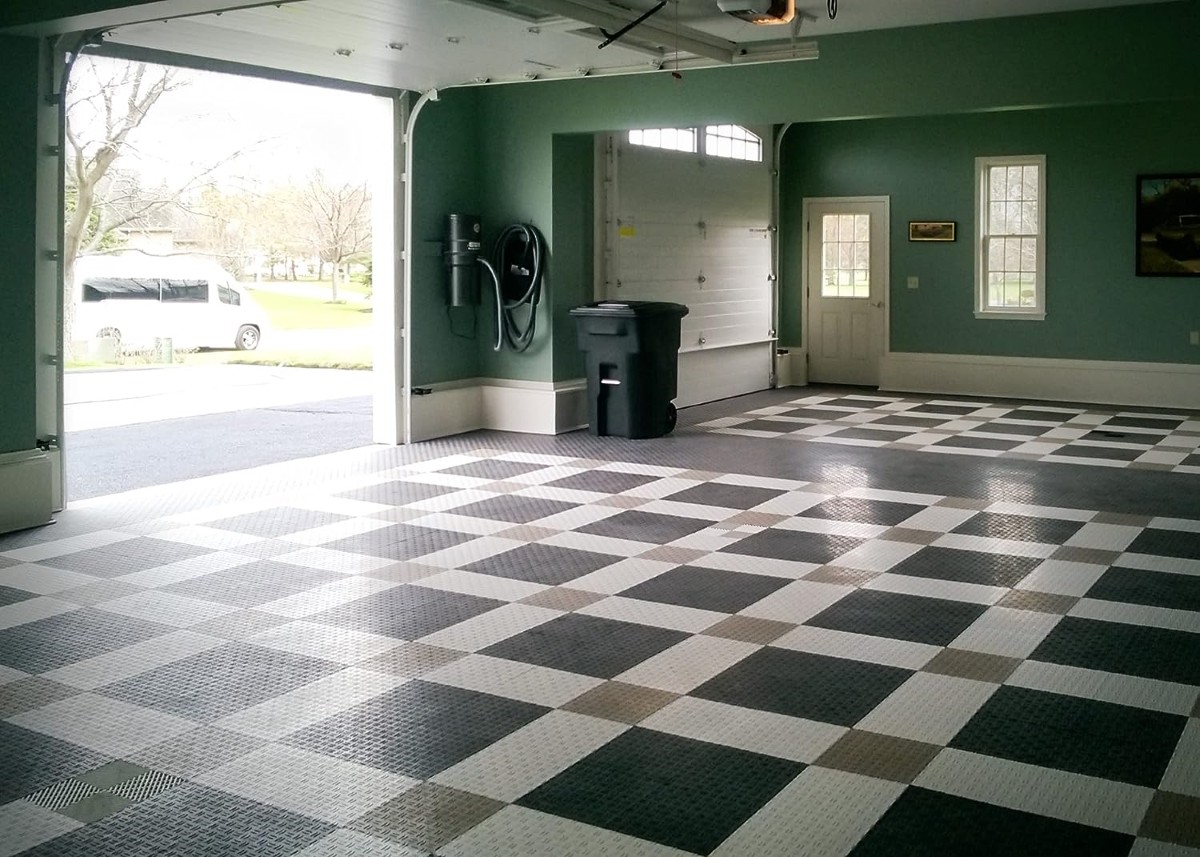 Interlocking tiles in garage
Interlocking tiles in garage
Interlocking garage floor tiles are a popular choice for a reason. Constructed from robust vinyl or durable rubber, these tiles easily snap together, creating a floating floor that doesn’t require adhesives. This makes them an excellent solution for covering up existing concrete imperfections like cracks, though a relatively even surface is still ideal for optimal results. Garage floor tiles are known for their DIY-friendly installation and offer a comfortable, slightly cushioned surface underfoot.
For those looking to inject some personality into their garage, interlocking tiles, such as Big Floors GarageTrac, come in a variety of colors. This allows for creative freedom in designing custom patterns, checkerboard layouts, or defined border areas, adding a visually appealing element to your garage space. Beyond aesthetics, these tiles are resistant to oil, chemicals, and stains, making them a practical and easy-to-clean garage flooring solution.
2. Roll-Out Vinyl Garage Flooring
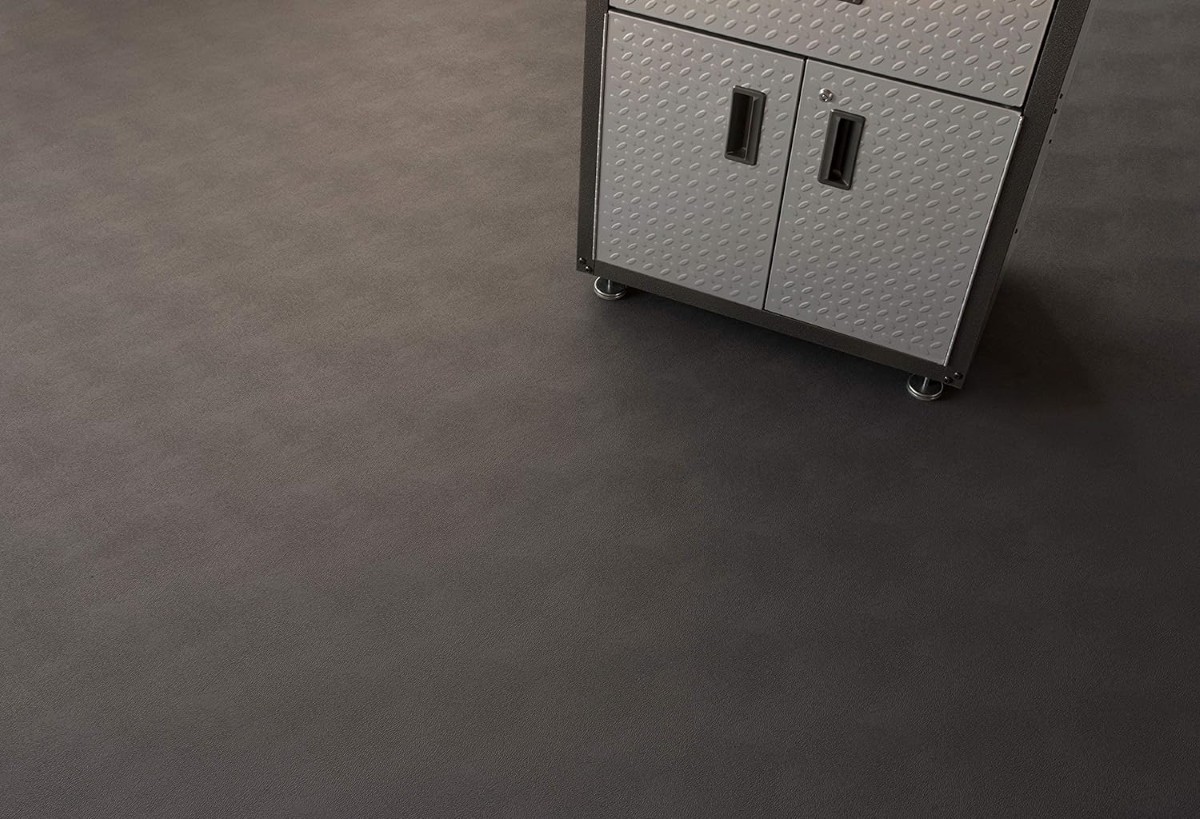 Dark vinyl flooring
Dark vinyl flooring
Roll-out vinyl flooring is the epitome of straightforward installation for garage floors. As the name suggests, this material simply unrolls across your garage floor. You’ll need to trim it to fit the exact dimensions of your space, but once laid out, it’s ready for use immediately. This type of garage flooring is excellent for quickly concealing imperfections in the underlying concrete and provides a seamless, clean look.
While installation is incredibly easy, roll-out vinyl flooring has a few trade-offs. Unlike interlocking tiles, repairs can be more complicated as you can’t replace individual sections. Custom patterns are also not easily achievable with this monochromatic material. However, if you prefer a uniform, sleek garage floor with minimal fuss, products like the G-Floor vinyl garage floor protector mat are a strong contender. This option offers excellent protection against spills and stains and is very easy to clean, making it a practical choice for busy garages.
3. Peel-and-Stick Garage Floor Tiles
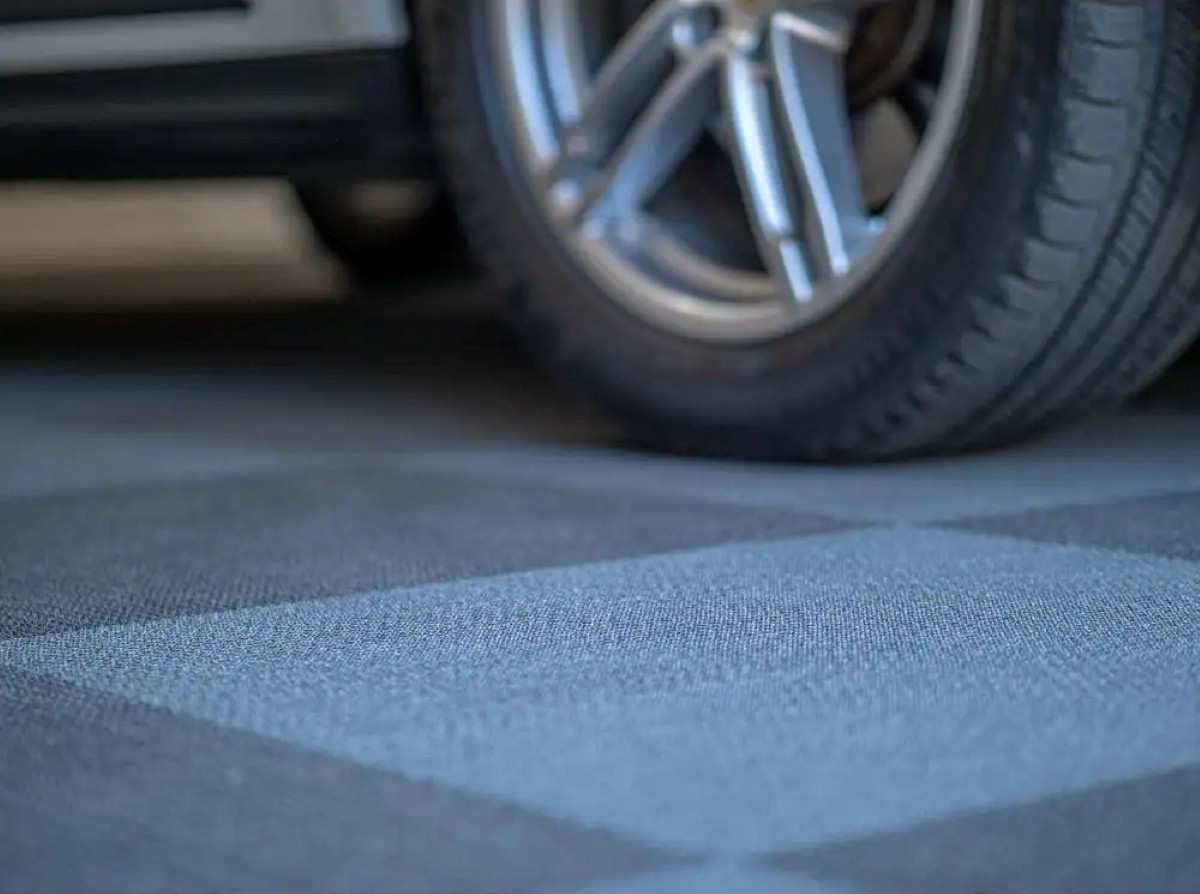 Black and gray peel and stick tiles
Black and gray peel and stick tiles
If your garage floor is reasonably level and free from significant cracks, peel-and-stick tiles offer another user-friendly garage flooring option. Typically made from heavy-duty vinyl, and in some cases like LifeTiles, high-performance polyester, these tiles come with an adhesive backing for direct application to the concrete. They are easy to cut with a utility knife, allowing for quick and customized installation.
The individual tile format makes it simple to mix and match colors to create patterns or define zones within your garage. However, proper surface preparation is crucial for peel-and-stick tiles. The concrete floor must be thoroughly cleaned to remove dirt, grease, and debris, and completely dry to ensure proper adhesion. When installed correctly, these tiles offer a durable and attractive garage floor surface that is also relatively easy to maintain.
4. Painted Garage Floor
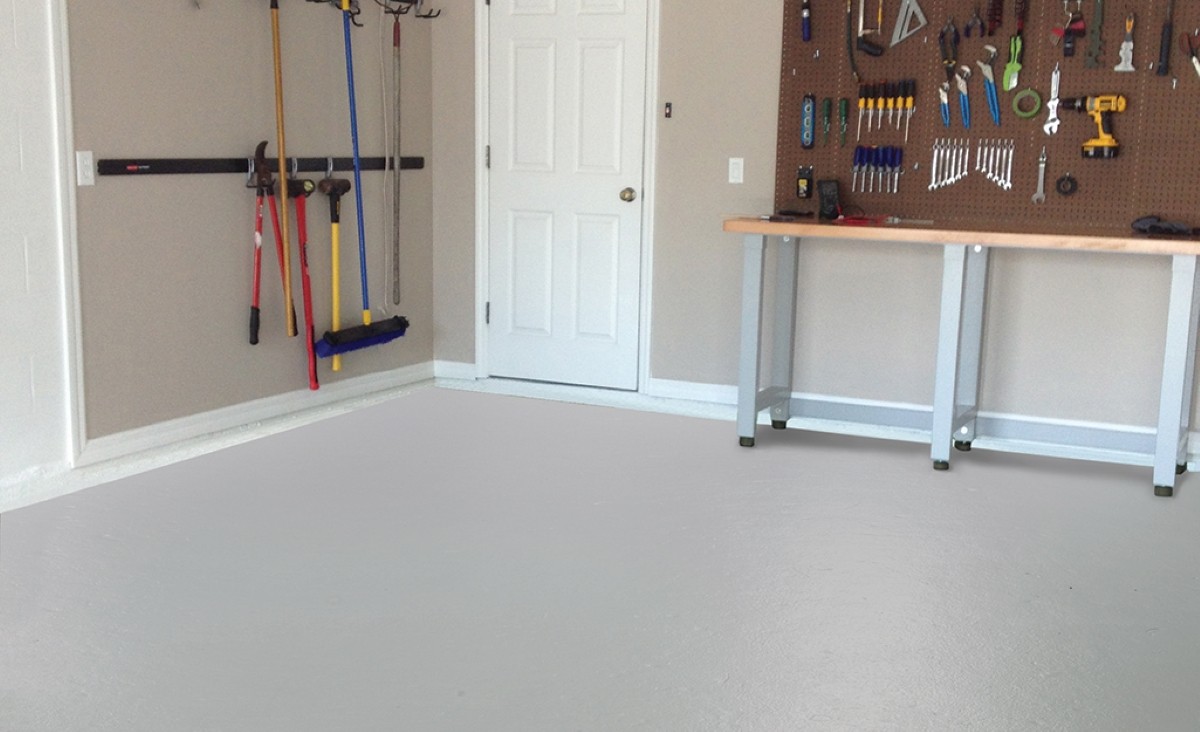 Painted garage floor
Painted garage floor
For the budget-conscious homeowner, painting your garage floor is one of the most economical garage flooring ideas. It’s a DIY project that can often be accomplished with supplies you might already have. Painting is a simple way to significantly improve the look of a dull concrete floor. However, it’s important to note that painting is more labor-intensive than other flooring options and requires careful preparation for lasting results.
Before painting, any cracks in the concrete must be repaired with a concrete filler. Thorough cleaning is essential to remove any contaminants that could prevent paint adhesion. For the best and most durable finish, use a primer specifically designed for concrete floors, followed by a high-quality garage floor paint. While paint is the least durable option compared to tiles or epoxy, it’s a cost-effective way to enhance your garage floor’s appearance and can last for several years with proper application and maintenance, typically requiring re-application every 3-5 years depending on traffic.
5. Garage Floor Carpet
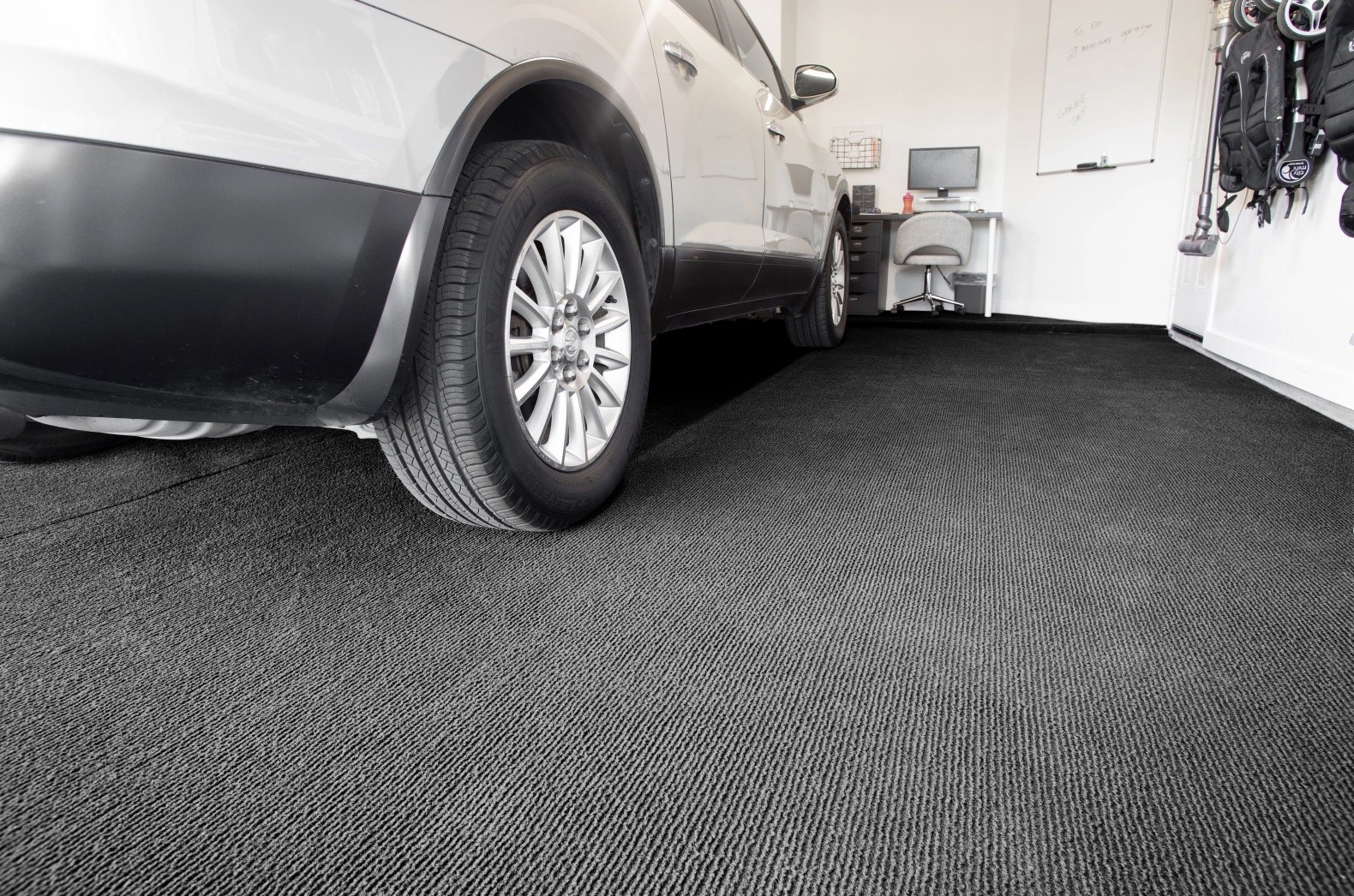 white car parked on top of Garage Grip flooring
white car parked on top of Garage Grip flooring
Carpeting in a garage might sound unconventional, but specialized products like Garage Grip are designed to withstand the unique demands of this environment. This type of garage flooring is made from waterproof and stain-resistant materials, often recycled polyester, and is engineered to resist damage from common garage hazards like ice melt and automotive fluids.
Garage floor carpet rolls out like traditional carpet but doesn’t require adhesives or fasteners to stay in place. It provides a softer, more comfortable surface underfoot compared to hard concrete or tile, which can be a significant advantage if you spend a lot of time in your garage working on projects or hobbies. While it offers a unique aesthetic and added comfort, it’s important to consider the specific maintenance needs of garage carpet, ensuring it’s regularly cleaned to maintain its appearance and longevity.
6. Epoxy Garage Floor Coating
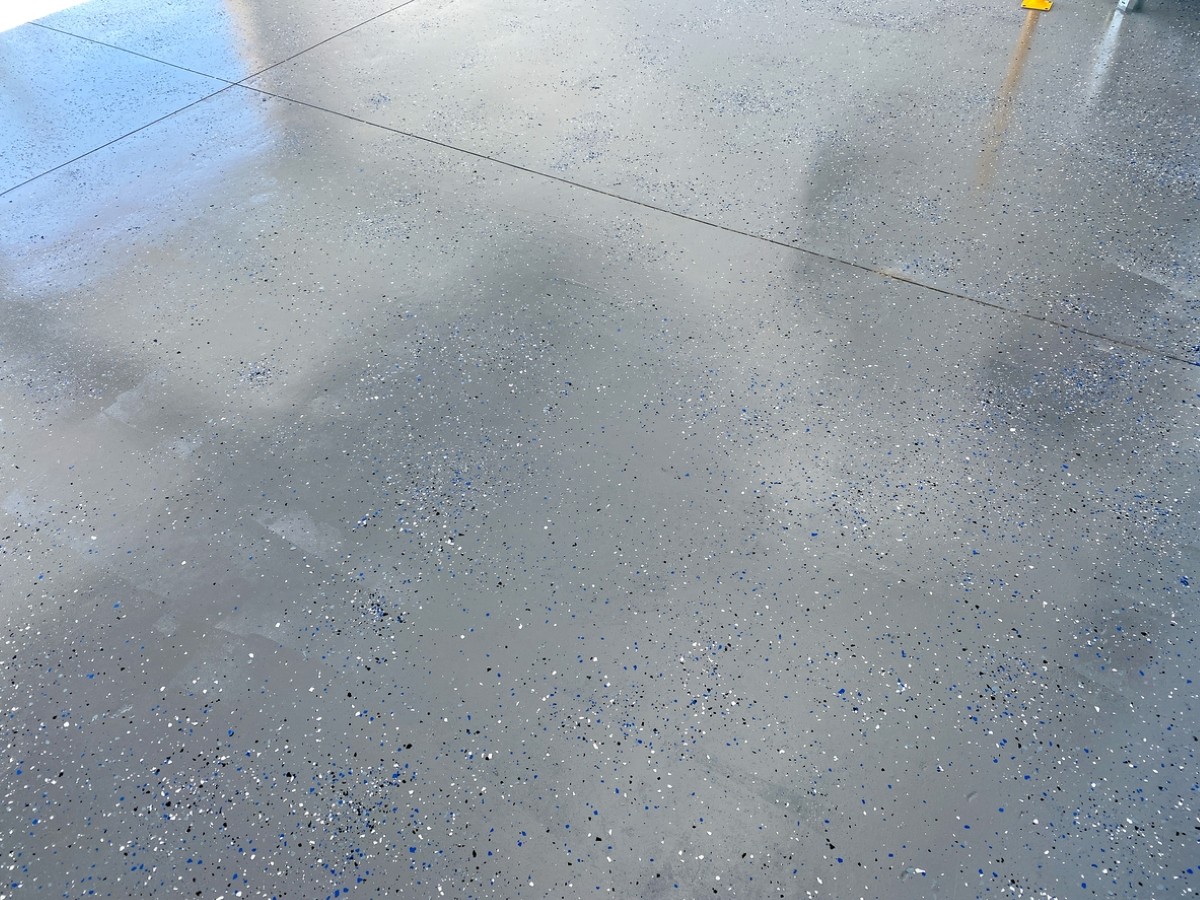 Gray epoxy flooring with colored chips
Gray epoxy flooring with colored chips
Epoxy garage floor coatings are renowned for their durability and professional finish. Applying epoxy is similar to painting but involves a two-part mixture of epoxy resin and a hardener. Like painting, surface preparation is key: the concrete floor needs to be patched, cleaned, and etched to ensure proper epoxy adhesion. Once mixed, the epoxy has a limited working time, usually around 2 hours, requiring a swift and efficient application.
Epoxy provides a hard, seamless, and chemical-resistant surface that is exceptionally durable and easy to clean. Decorative color chips can be scattered across the wet epoxy for added texture and visual appeal, and a clear topcoat seals the floor, enhancing its durability and shine. Epoxy garage flooring is a long-lasting solution that resists oil stains, tire marks, and most garage chemicals, making it a premium choice for those seeking both performance and aesthetics.
7. Concrete Sealer for Garage Floors
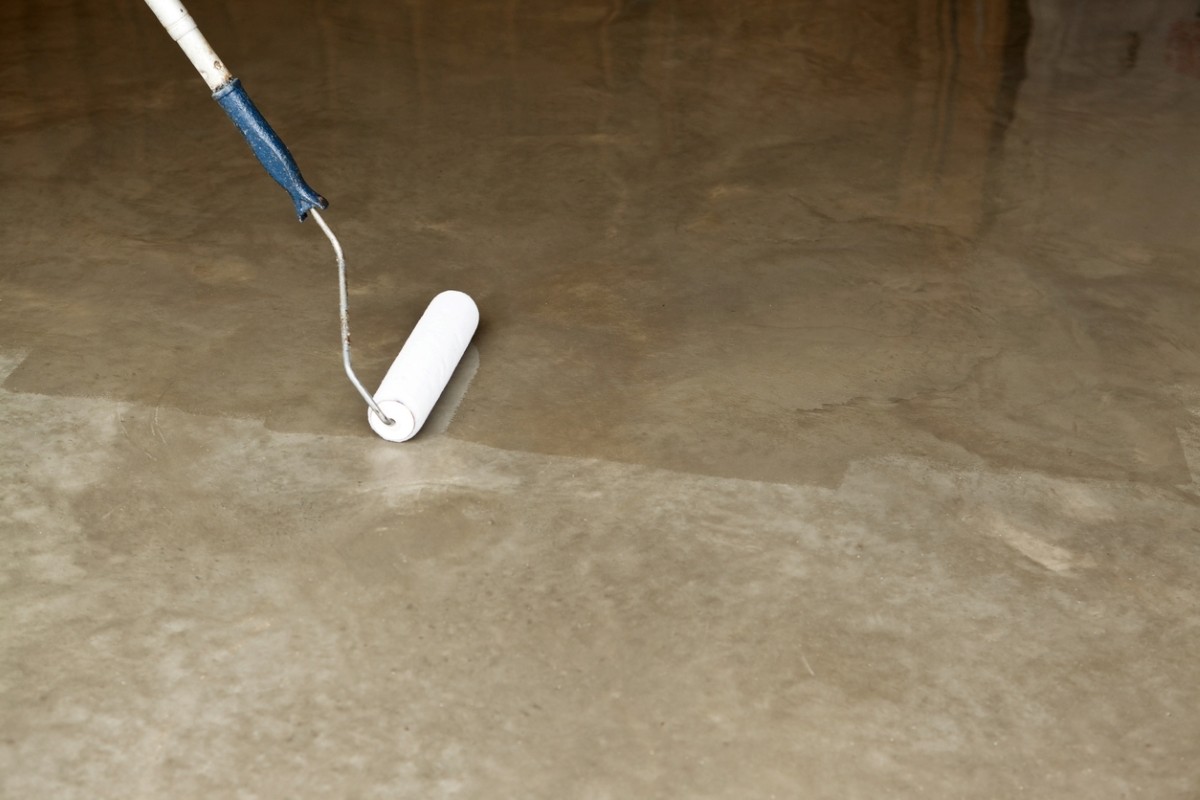 Concrete sealer applying to concrete floor
Concrete sealer applying to concrete floor
For homeowners with a limited budget, concrete sealer is a simple and effective way to improve the appearance and longevity of their existing concrete garage floor. Sealing concrete helps protect it from stains, dust, and moisture penetration, keeping it looking cleaner and fresher for longer.
There are two main types of concrete sealers: solvent-based and water-based. Solvent-based sealers often provide superior protection and create a “wet look” finish, enhancing the concrete’s appearance. Water-based sealers are a more environmentally friendly option with lower VOC (volatile organic compounds) content, although they might not last as long as solvent-based versions. Applying concrete sealer is a straightforward DIY project that can significantly extend the life of your garage floor and improve its resistance to everyday garage wear and tear.
8. Concrete Stain for Garage Floors
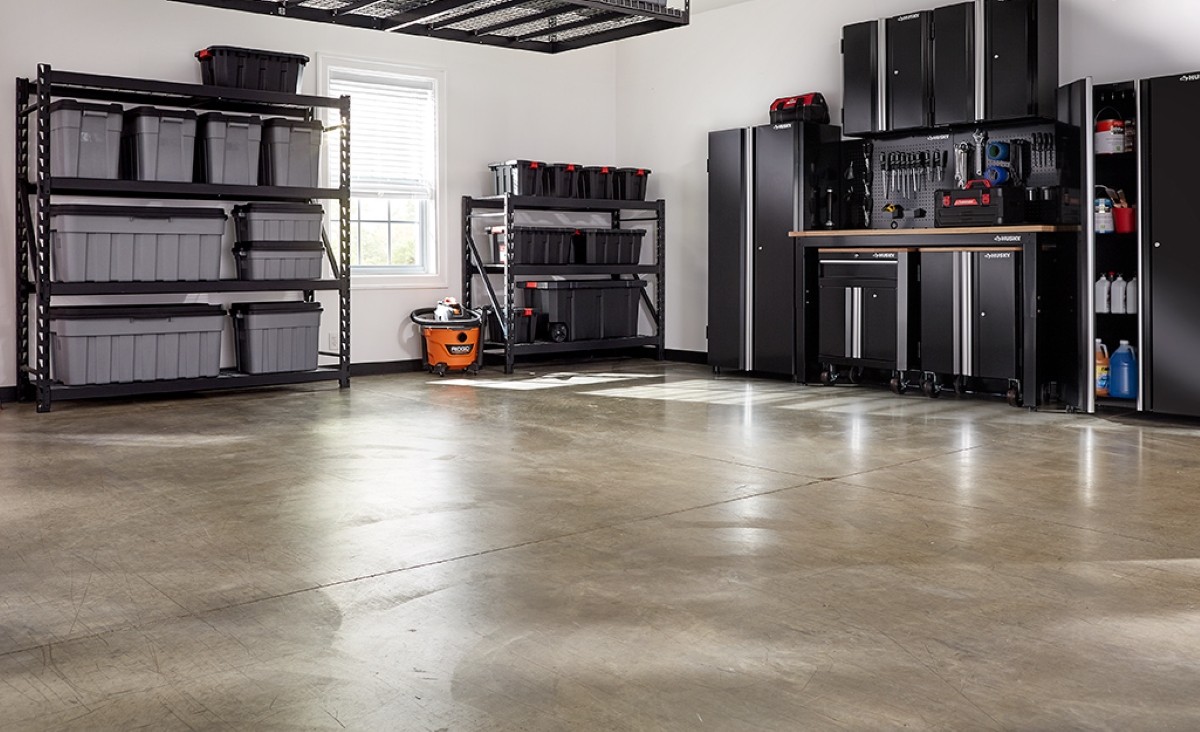 concrete stain on garage floor
concrete stain on garage floor
Concrete stain is another budget-friendly garage flooring option that offers a decorative touch while maintaining a natural concrete look. Unlike paint or epoxy, concrete stain is translucent and penetrates the concrete surface, allowing the natural texture and variations of the concrete to show through. This results in a unique, mottled appearance that can resemble natural stone or watercolors.
Concrete stain is a good choice if your concrete floor is in relatively good condition and you appreciate a more natural, less uniform aesthetic. However, it’s not ideal for floors with significant stains or imperfections, as these will likely be visible through the stain. Concrete stain is generally more durable than paint, as it doesn’t chip or peel easily due to its penetrating nature. It’s a long-lasting, low-maintenance option to enhance the look of your garage floor with color and subtle style.
9. Stone Garage Flooring
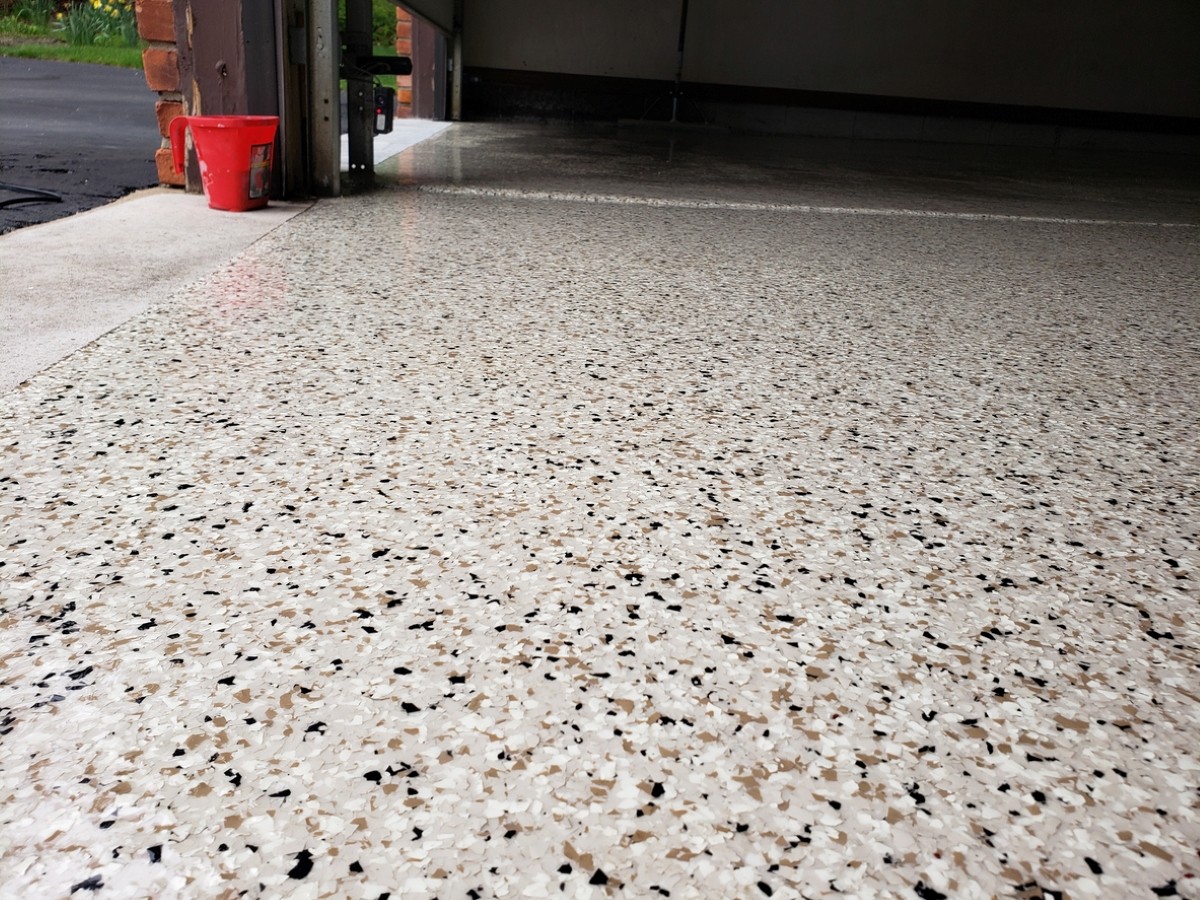 Epoxy garage flooring
Epoxy garage flooring
Stone garage flooring offers a unique and upscale aesthetic. Typically created by embedding small stones or pebbles in an epoxy resin, this type of flooring provides a textured, natural-looking surface. The combination of natural stone and epoxy creates a visually appealing and durable garage floor.
While stone flooring offers a sophisticated look, it can come with a higher price tag compared to other garage flooring options. Over time, stone flooring may require resealing every few years to maintain its integrity and appearance. Additionally, the textured surface, while attractive, may be slightly more challenging to clean than smooth surfaces like epoxy or vinyl. However, for homeowners prioritizing a distinctive and high-end garage aesthetic, stone flooring can be a worthwhile investment.
Choosing the right garage flooring depends on your budget, desired look, durability needs, and DIY comfort level. Each option offers unique benefits, so consider your priorities to select the best garage flooring solution for your space.
